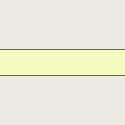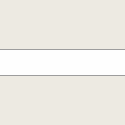Highway Mapping Myanmar
Typology of Road Network in Myanmar
Myanmar does not yet have a detailed official road classification system, that could be easily translated as a reference for OpenStreetMap work in Myanmar. This Myanmar OSM highway tagging guide tries to match the most appropriate OSM highway tag to the functional, economic and social role of roads in Myanmar while trying to match with the existing rudimentary road classification system as used by relevant government departments.
Goal
The road conditions in Myanmar's State and Regions often do not correspond to their economic and social role. A road typology should be based on the road usage and not on the surface or the visual appearance of a road. In some areas, major roads are unpaved and can be heavily damaged during the rainy season. Sometimes the only road connecting major villages can seem like tracks or larger paths, sometimes even leading partly through river beds. It is important for remote mappers from other countries to adapt to this reality. In some areas, such near urban centers, it is also important to consider the density of the road network.
This highway typology is used for Myanmar, but follows similar typologies from around the world. It is based on mapping experience in various countries, observations and discussions with NGO's and OSM communities in various countries. In some areas, there is a very dense network of roads with many tracks going in all directions. In such a context, it is important to have a hierarchy of roads that highlights the more important ones for economic activities. highway=tertiary is used to highlight roads interconnecting larger villages, or linking villages to township centers. Also, highway=unclassified corresponds to minor roads. It is important to distinguish these rural roads interconnecting villages or leading to significant facilities from tracks going to fields and forest areas only and to distinguish them also from service roads (usually private or semi-private roads) going for a shorter distance to facilities or located inside compounds. Please note that a highway=track is not a more primitive construction class of a residential road, but used only for sole access to agricultural fields, if unclear use highway=unclassified. Keeping in mind that many highways are formed by repeated foot and animal traffic and only those that are permanent should be mapped. Tracks and paths created and maintained for a short period only, e.g. to facilitate logging or harvesting should not be mapped at all.
The individual mappers should classify a particular road when adding it to the OSM database. Once the network of road is completed, we have an overview of the road network, and experienced mappers can then revise this network and ensure that the hierarchy of major roads is clearly established.
Values based on economic and social dimension of the road
The Highway tag reflects the economic and social dimension of the road. See below for details of commonly used values.
| Tag-Value | Name | Description | Rendering | Photo | |
|---|---|---|---|---|---|
| Roads | |||||
| highway=motorway | Motorway | A restricted access major divided highway, normally with 2 or more running lanes plus emergency hard shoulder. No at-grade intersections or driveways. Access only at interchanges. Pedestrians, motorcycles and bicycles prohibited. Mostly tolled.
Currently the only such motorway in Myanmar is the Yangon-Mandalay Expressway. |

|
||
| highway=trunk | Trunk Road | The most important roads in a country's system that aren't motorways.
In Myanmar, those trunk roads are highways that form part of the ASEAN highway network and are usually designated as "AH" (e.g. AH1, AH14, AH112). |

|
||
| highway=primary | Primary Road | The next most important roads in a country's system.
Major transportation routes between and into major cities within a country. In Myanmar those "primary highways" are connecting State and Region capitals and may connect to district capitals. They are usually designated as "National Roads", identified by a leading "NR" e.g. (NR8) on the road ref/number. |

|
||
| highway=secondary | Secondary Road | The next most important roads in a country's system.
Important transportation routes connecting cities and towns. In urban areas they usually form major arterials. In Myanmar, those roads are usually paved, but in some less developed areas, can also just feature an unpaved compacted surface. |

|

| |
| highway=tertiary | Tertiary Road | The next most important roads in a country's system.
Main roads connecting towns to villages and roads between larger villages. In urban areas they usually form minor arterials. Roads are often paved or feature an unpaved compacted surface. |

|

| |
| highway=unclassified | Minor/Unclassified Road | The least important through roads in a country's system – i.e. minor roads of a lower classification than tertiary, but which serve a purpose other than access to properties.
Non-residential or mixed-use minor roads providing access to small villages, hamlets and public roads providing access to significant commercial, economic, religious, recreational or similar facilities. In urban areas they usually form streets in a commercial area or central business district (CBD) and form public roads in industrial areas.
Can be paved but more often feature an unpaved compacted or ground surface. |

|

| |
| highway=residential | Residential Road | Roads which serve as an access to housing, without function of connecting settlements. Usually lined with housing.
Roads navigable by motorized traffic whose primary purpose is access to houses and residential lots without function of connecting settlements. Located usually inside settlement and built-up areas. Where regular motorized traffic is impossible, limited, or disallowed see highway=path. Note: highway=living_street has been used sometimes to tag smaller residential roads in Myanmar. Living streets (residential streets where pedestrians have legal priority over cars and speeds are kept very low) are not common in Myanmar and this tag should only be used if the road is unanimously designated as a road matching with the highway=living_street criteria. Usually smaller roads in residential areas are better tagged as highway=residential though. |

|

| |
| highway=service | Service Road | Roads providing access to a facility with specific function, usually partly or fully managed by the facility. Often featuring a gate or having restricted access (temporaily or permanently). Usually for a few hundred meters maximum.
Commonly found as:
|

|
||
| highway=track | Unmaintained Track Road | Permanent road (track) for mostly agricultural or forestry uses, wide enough for cars. Unpaved roads, often only passable by 4x4. Tends to turn muddy during rainy season.
Commonly found as:
Note: Although tracks are often rough with unpaved surfaces, this tag is not describing the quality of a road but its use. Consequently, if you want to tag a general use road, use one of the general highway values instead of track. Should not be used for unpaved minor roads that connect to important facilities or have connection function between settlements. See highway=unclassified or highway=service Should not be used for tracks only passable by motorbikes. See highway=path Consider adding
to specify track quality and seasonal usage impediments. Note: Temporary tracks (logging tracks, makeshift field tracks only used during dry/harvest season, short-lived plantation and mining tracks, short lived construction site access tracks, ...) should not be mapped at all. |

|

| |
| Paths | |||||
| highway=path | Path | A non-specific path used as a route between dwellings, settlements, facilities which is not wide enough for cars.
May be used by motorbikes, bicycles and on foot. Residential way or connection way by foot or motorbike within an urban areas. May be the primary access route for some isolated settlements. Common in Myanmar in all environments (urban, rural) and may have different function and condition. May feature steep grades, narrow width, irregular alignment, obstacles, boulders, stream crossings, and seasonal use. Consider adding addtional tags to further specify path such as
Note: highway=footway has been used sometimes to tag paths in Myanmar. Footways (designated footpaths i.e., mainly/exclusively for pedestrians.) are not common in Myanmar and most narrow ways can be used by pedestrians, animals, motorcycles, biciycles etc alike and should be tagged as highway=path. |

|

| |
Road surface status
One can indicate the physical surface of the road with the surface tag:
Generically, a hard surface (asphalt, cobblestone, concrete...) is indicated with surface=paved and a soft one (ground, sand...) with surface=unpaved.
Tracktype: (need to add section)
Description can be more precise:
By default, primary/secondary/tertiary/unclassified/residential and service highway=* are supposed to be paved. If it is not the case, one must mention it, especially if the surface is soft. When potholes represent more than 50% of the surface, the way may be considered as unpaved.
In opposite, highway=track are supposed to be unpaved by default.
Seasonal roads
Seasonal roads are indicated by seasonal=yes. In opposite, one can indicate that a road is usable year around with seasonal=no.
An approximate closing period can be provided with a conditional restriction [1]
access:conditional=no @ Jul-Sep: this track is usually closed from July to September (or open from October to June).
For the more complicated case where a track may be usable by 4Wheel drive car during dry season but only with zebu carts in rainy season, the following scheme is suitable:
River crossing
When a road is crossing a river, whatever it is with a bridge, an organized/constructed ford or natural ford, it should be tagged on the portion of the road affected.
Bridges
Bridges are tagged by default with bridge=yes and they should always also have a layer=1 tag.
The bridge surface, especially if different from the main road, can be indicated with surface=*. For instance, surface=metal, surface=concrete, surface=asphalt or surface=wood.
In some cases there is an alternative way for the crossing near the bridge. Such crossings (whether they be for trucks, bicycles or motorcycles -- or even regular cars) should be mapped. They involve a ford (ford=yes) in almost all cases. A number of these crossings are built intentionally -- even if the ford itself would be a natural one -- not only for trucks (when the bridge is too light-structured for them) or two-wheelers but also simply as an backup passage for all vehicles in case the bridge might be washed away in more severe floods. This is why such alternative crossings are important to map!
Other crossings
Fords: River or water crossings without a bridge are fords and should be tagged with ford=yes. This applies to both natural and constructed ("organized") crossings. depth=* allows to indicate the usual (dry season, out of flood or hurricane) depth of the water. depth=0 will be used for crossing usually dry but that may be used upon water. In opposite, a crossing usually dry that become dangerous to use once water is flooding should be tagged as flood_prone=yes. surface=* can be used as usual. A constructed/"organized" ford is often made of concrete and should be tagged surface=concrete, accordingly.
Note that if any structure exists that allows normal level water of any waterway (river, stream or drain) to pass under the road it is not a ford! It might well be a culvert if there is a single tube under the road under 3 meters in diameter. Culverts are tagged on the waterway which is split as bridges for only the part that crosses the road and tagged with tunnel=culvert and a layer=-1 tag.
For river crossing with boats, use: route=ferry
Multiple Paths
In some areas, there are no formal paths, but several unpaved paths example very close to each other (within 100m) that all lead to the same destination or town. As of now, practice has been to choose the most prominent of those tracks or paths and ignore the others.



